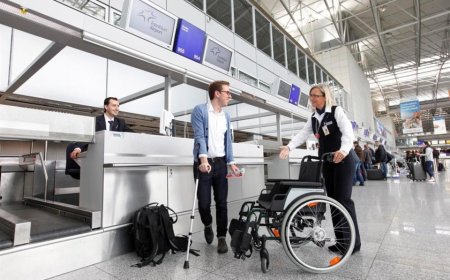Winter Wonderland: Treks to Experience the Snowy Himalayas
Winter transforms the mighty Himalayas into a magical realm of snow-laden forests, frozen lakes, and sparkling white trails. For trekkers and nature lovers, this season unveils a unique opportunity to experience the mountains in their most pristine and silent form. The snow-covered peaks and trails provide a surreal backdrop for those seeking solitude, beauty, and a touch of adventure.
Winter transforms the mighty Himalayas into a magical realm of snow-laden forests, frozen lakes, and sparkling white trails. For trekkers and nature lovers, this season unveils a unique opportunity to experience the mountains in their most pristine and silent form. The snow-covered peaks and trails provide a surreal backdrop for those seeking solitude, beauty, and a touch of adventure.
Whether you're a first-time trekker or an experienced mountaineer, the Himalayas offer an impressive variety of winter treks that cater to all skill levels. In this guide, we spotlight the most scenic and snow-filled winter treks in India to embark on in 2025, including popular choices like the Nag Tibba Trek, Surya Top Trek, Dodital Trek, Brahmatal Trek, Pangarchulla Trek, Kuari Pass Trek, Bali Pass Trek, Valley of Flowers Trek, and the ever-iconic Kedarkantha Trek.
1. Nag Tibba Trek A Perfect Winter Weekend Getaway
If you're new to winter trekking, the Nag Tibba Trek is the ideal introduction. Located near Mussoorie, this easy-to-moderate trek reaches a height of 9,915 ft and offers stunning views of the snow-covered Bandarpoonch, Kala Nag, and Swargarohini peaks.
The trail winds through pine forests and quaint villages, often blanketed in snow during the winter months. It's an excellent choice for a weekend trek and requires no prior experience. Short, accessible, and visually rewardingNag Tibba is a must-do winter trek for families and beginners.
2. Surya Top Trek Offbeat Snow Trek with Panoramic Vistas
For those seeking an off-the-beaten-path winter adventure, the Surya Top Trek delivers. This lesser-known gem lies in the Uttarkashi region and climbs to about 13,000 ft. During winter, the trail is covered in deep snow, offering a challenge for seasoned trekkers and spectacular rewards in the form of sunrise views over the Garhwal Himalayas.
With fewer crowds and untouched paths, Surya Top is ideal for those wanting a more secluded Himalayan experience during the colder months.
3. Dodital Trek Winter by a Frozen Lake
The Dodital Trek becomes a peaceful, snowy haven in winter. The Dodital Lake, surrounded by snow-clad pine and oak forests, often freezes during January and February, creating a dreamlike setting. This trek is moderately easy and perfect for nature lovers and photographers looking to capture the winter serenity of the Himalayas.
The route also offers a glimpse into the mythology of the region, as Dodital is believed to be the birthplace of Lord Ganesha.
4. Brahmatal Trek A Snow-Draped Alpine Trail
A favorite among winter trekking routes, the Brahmatal Trek is renowned for its snow-covered landscapes and views of iconic peaks like Mt. Trishul and Nanda Ghunti. With its frozen lakes, alpine meadows, and dense forests, Brahmatal transforms into a white wonderland between December and March.
The summit at 12,250 ft provides one of the best vantage points in winter, making this moderate-level trek a top choice for thrill-seekers and snow lovers.
5. Pangarchulla Trek For the Experienced Winter Adventurer
The Pangarchulla Trek is a thrilling challenge during the winter season. Standing tall at around 15,069 ft, this trek is best suited for experienced trekkers ready to take on steep snow climbs and freezing temperatures.
The trail, starting from Auli, winds through forests and snowy ridges with panoramic views of Nanda Devi, Dronagiri, and Chaukhamba. If you're looking to push your limits while being surrounded by breathtaking winter landscapes, Pangarchulla should be on your 2025 list.
6. Kuari Pass Trek Historic Snow Trek with Epic Views
Another classic winter trek is the Kuari Pass Trek, famously known as the Lord Curzon Trail. This scenic route takes you through pristine forests, alpine meadows, and traditional Himalayan villages before reaching the pass at 12,516 ft.
The snow-covered terrain adds to the charm, and the views from the topfeaturing Mt. Nanda Devi and other prominent peaksare nothing short of majestic. Ideal for moderately experienced trekkers, Kuari Pass is a winter delight for adventure seekers.
7. Bali Pass Trek A True Himalayan Expedition
Winter at Bali Pass Trek(16,207 ft) is not for the faint-hearted. Connecting Har Ki Dun to Yamunotri, this trek is challenging even in summer, and in winter, it becomes a serious expedition requiring prior experience and technical skills.
However, the rewards are massivepristine glaciers, dramatic ridge walks, and views of Swargarohini and Bandarpoonch draped in snow. For seasoned trekkers seeking an adrenaline rush and a raw Himalayan adventure, Bali Pass in winter is an ultimate conquest.
8. Valley of Flowers Trek Not a Typical Winter Trek, But Still Worth Mentioning
Though the Valley of Flowers Trek is typically best done during the monsoon months (JulySeptember), winter enthusiasts often wonder about its accessibility during colder months. The region becomes inaccessible due to snow from late October onwards, but understanding its seasonal limitations is vital when planning Himalayan adventures.
So, while not available in winter, its beauty and reputation earn it a mention in any Himalayan trek roundup.
9. Kedarkantha Trek The King of Winter Treks
Arguably the most popular winter trek in India, the Kedarkantha Trek is a snowy paradise. Reaching up to 12,500 ft, this trail features snow-laden pine forests, picturesque campsites, and a rewarding summit climb that offers 360 views of Himalayan peaks.
Its beginner-friendly yet incredibly scenic, making it one of the most sought-after treks from December to April. Whether youre traveling solo, with friends, or in a group, Kedarkantha is a winter classic that never disappoints.
Why Choose a Winter Trek in the Himalayas?
-
Less Crowded Trails: Unlike summer treks, many winter routes are quieter, allowing for a more intimate experience with nature.
-
Unique Landscapes: Snow transforms the terrain into something otherworldly, giving you an entirely new perspective on the Himalayas.
-
Great for Photography: The white landscapes, dramatic skies, and untouched trails make for some of the best photo opportunities.
Trek Safely with Himalaya Shelter
Embarking on a winter trek in the Himalayas requires expert guidance, proper equipment, and sound planning. Himalaya Shelter offers curated winter trekking packages that ensure safety, experienced guides, comfortable logistics, and sustainable travel practices.
Whether you're planning your first snow trek or looking to tick off a high-altitude adventure from your bucket list, Himalaya Shelter has a trail for you.
Conclusion
From short getaways like the Nag Tibba Trek and Dodital Trek to thrilling expeditions like Bali Pass Trek and Pangarchulla Trek, the snowy Himalayas have something magical for everyone. Winter trekking is more than just an adventureits a chance to see the world differently, experience solitude, and reconnect with nature.
Make 2025 your year to explore the winter wonderland of the Himalayas. Pack your gear, lace your boots, and let the snowy trails call you into their silent embrace.








































